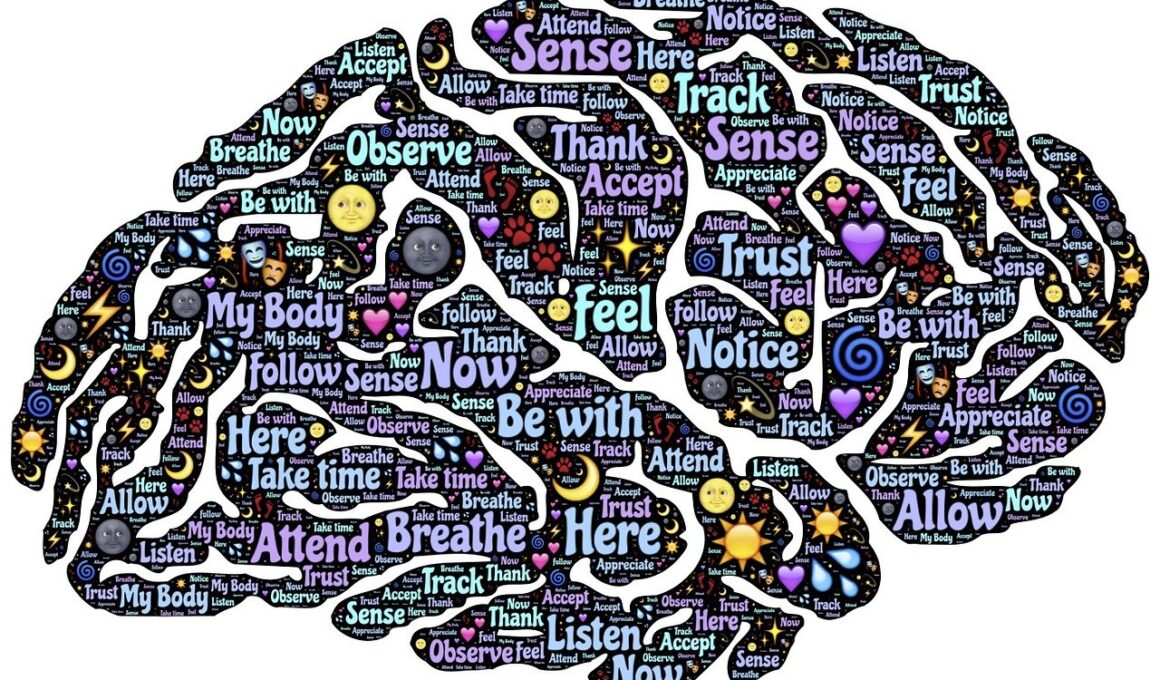Biofeedback and Its Role in Strengthening Mind-Body Links
Biofeedback is a powerful tool that facilitates the connection between the mind and body by helping individuals gain awareness of physiological functions. This practice enables people to learn how to control bodily processes that are typically automatic, such as heart rate, muscle tension, and blood pressure. By utilizing monitoring devices, biofeedback provides real-time feedback about these physiological metrics, empowering individuals to foster greater self-regulation and promote healing. Research shows that consistent biofeedback training can enhance not only physical health but also mental well-being, leading to improved stress management, emotional stability, and overall quality of life. This practice has been found beneficial for a range of conditions, including anxiety, chronic pain, and high blood pressure. Additionally, biofeedback is often employed in rehabilitation scenarios, aiding patients in recovery and enhancing their overall performance. As individuals engage in biofeedback sessions, they learn to recognize physiological signals and modify responses accordingly, paving the way for resilience and better health outcomes. Overall, biofeedback exemplifies the potent connection between the mind and body, allowing individuals to reclaim control over their health and enhance their performance.
One of the primary benefits of biofeedback involves its application in stress reduction. By monitoring physical signs of stress such as heart rate variability, individuals can learn to identify stress triggers and apply relaxation techniques effectively. These techniques might include deep breathing, progressive muscle relaxation, or visualization strategies that help calm the mind and body. Through this process, practitioners often experience a reduction in stress levels as they develop skillful techniques to manage daily pressures. Scientific studies reveal that individuals who participate in biofeedback training report lower anxiety levels, higher emotional regulation, and improved mental clarity. Furthermore, they tend to show decreased levels of cortisol, a hormone commonly associated with stress. As individuals practice biofeedback regularly, many become more attuned to their physiological responses, learning how their thoughts and emotions directly impact physical states. Subsequently, they can harness the mind-body connection to effect positive changes in their lives. The cumulative effect of biofeedback training not only leads to immediate stress relief but also fosters a long-term transformation in the way individuals perceive and react to high-stress situations. By embracing this practice, people open the door to healthier coping mechanisms.
Applications and Implementation of Biofeedback
Biofeedback is widely used in clinical settings, offering diverse applications ranging from pain management to performance enhancement. Healthcare professionals often integrate biofeedback techniques with traditional treatment modalities to create comprehensive care plans tailored to patients’ needs. For instance, individuals suffering from chronic pain can learn how to control pain perception through relaxation techniques and mindfulness practices, which ultimately leads to reduced reliance on medication. Athletes, on the other hand, may use biofeedback to sharpen their mental focus, improve concentration, and enhance overall performance. Training with biofeedback allows them to understand the intricate link between their mental state and physical performance. Additionally, teachers and therapists use biofeedback tools with children diagnosed with Attention Deficit Hyperactivity Disorder (ADHD) to help them better manage their focus and impulsivity. As technology has advanced, more portable biofeedback devices have entered the market, enabling individuals to practice techniques at home. This accessibility promotes the normalization of biofeedback as a viable self-help strategy for various health concerns. As biofeedback gains recognition, it brings a multimodal approach that emphasizes the mind-body connection as integral to health and performance.
Another significant approach to biofeedback is its role in enhancing self-awareness among individuals. Biofeedback promotes the understanding of personal body signals, empowering people to make informed decisions regarding their health. This plays a key role in developing emotional intelligence, as people learn to recognize the physiological cues associated with different emotional states. Over time, practitioners can identify when stress is building, allowing them to intervene proactively and implement coping strategies before issues escalate. As awareness grows, individuals may notice patterns related to their behavior, thoughts, and feelings, leading to a deeper understanding of their triggers and responses. This constructive feedback loop reinforces the importance of mindfulness and self-reflection in maintaining a healthy mind-body connection. By merging biofeedback with mindfulness practices, individuals heighten their ability to remain present and engaged, reducing anxiety and enhancing overall resilience. The insights gained through this self-monitoring and refleciton process become invaluable for personal growth and development. As people deepen their understanding of their mind-body connection, they can cultivate healthier relationships with themselves and others, fostering personal fulfillment and well-being.
The Future of Biofeedback in Mind-Body Research
In recent years, the landscape of biofeedback has evolved significantly, with ongoing research uncovering new potentials for its application. Advances in neurofeedback, a subset of biofeedback, have emerged, focusing on brain activity instead of peripheral physiological functions. This allows for the direct manipulation of brainwave patterns, offering promise in managing conditions such as anxiety, depression, and PTSD. Researchers are delving into the neurobiological underpinnings of the mind-body connection, providing insights into how emotional states can influence physical health and vice versa. As interdisciplinary collaboration between psychology, neuroscience, and medicine increases, a clearer picture of the biofeedback’s impact surfaces. The integration of virtual reality and artificial intelligence into biofeedback systems further enhances the personalization and effectiveness of interventions, enabling adaptive training protocols tailored to individual needs. Such innovative applications may help individuals achieve lasting changes by providing a platform for real-time feedback and guidance. As research continues to evolve, biofeedback has the potential to transform our understanding of health, emphasizing the importance of holistic approaches that recognize the interconnectedness of mind and body. Therefore, practitioners can better support comprehensive health management solutions.
Within the broader context of mental health, biofeedback fosters collaborative care, allowing for a synergistic approach to treatment. Mental health professionals are recognizing the significance of physical symptoms and how they relate to emotional well-being. This integrated perspective creates opportunities for a holistic therapeutic process. Collaborative practices may include incorporating techniques such as cognitive behavioral therapy alongside biofeedback training. Through this combined effort, practitioners assist clients in exploring cognitive patterns while simultaneously working on physiological responses to stress and emotional challenges. Empowering clients in this holistic manner fosters a more profound commitment to the therapeutic process and encourages sustainable lifestyle changes. Additionally, therapy environments may integrate biofeedback systems that encourage real-time monitoring of clients’ responses during sessions. This innovative approach provides both the therapist and the client immediate insights into their working relationship and emotional dynamics. Engagement and collaboration foster a strong therapeutic alliance, enhancing the overall efficacy of treatment approaches. As conversational dynamics shift, clients learn to articulate their physiological states, bridging the gap between emotional and physical experiences. Such possibilities underscore the role of biofeedback in enhancing therapeutic engagement and improving client outcomes.
Conclusion: Embracing the Mind-Body Connection
The journey of understanding and applying biofeedback signifies a cultural shift towards embracing a holistic understanding of health through the lens of the mind-body connection. As knowledge grows regarding the intricate interactions between emotional and physical states, biofeedback practices can help people reclaim agency over their health. Emphasizing empowerment and self-regulation, biofeedback illustrates the importance of tuning into our bodies; in doing so, individuals can foster habits that lead to a balanced and harmonious existence. With continued exploration and research, biofeedback stands poised to attract a broader audience, transcending traditional treatment boundaries. By incorporating tools that bridge mind and body, individuals develop resilient strategies to navigate challenges, enhance self-awareness, and improve overall well-being. As communities embrace biofeedback in schools, workplaces, and healthcare settings, its influence will only continue to expand. The future of biofeedback is bright, promising new avenues for improving mental and physical health alike. Ultimately, this integration leads to comprehensive health solutions centered around the profound connection that exists between mind and body, positioning biofeedback as a catalyst for transformative living.


